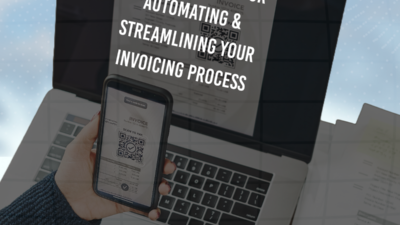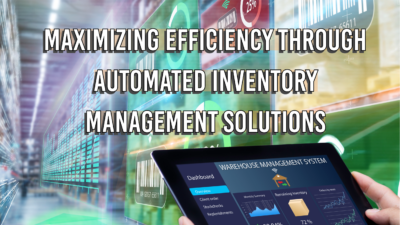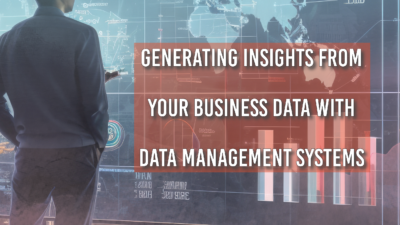Best Practices for Automating and Streamlining Your Invoicing Process
Best Practices for Automating and Streamlining Your Invoicing Process
Author: GDS
Businesses need to keep their invoicing process running smoothly to be successful. Unfortunately, errors in the invoicing process can cause cash flow issues and distrust from customers. This blog post will provide readers with best practices to automate and streamline their invoicing process. It will cover topics such as automating the process through cloud-based software, standardizing the format of invoices, and using customer feedback to make improvements. By following these steps, businesses can reduce errors in their invoicing process and gain a higher level of trust from customers. This post will be informative and tailored towards business owners who want to take control of their invoicing process.
Businesses need to keep their invoicing process running smoothly to be successful. Unfortunately, errors in the invoicing process can cause cash flow issues and distrust from customers. This blog post will provide readers with best practices to automate and streamline their invoicing process. It will cover topics such as automating the process through cloud-based software, standardizing the format of invoices, and using customer feedback to make improvements. By following these steps, businesses can reduce errors in their invoicing process and gain a higher level of trust from customers. This post will be informative and tailored towards business owners who want to take control of their invoicing process.
What is Invoicing and its Importance To Businesses?
Invoicing is the process of billing customers for goods or services. It’s an important part of any business’s operations and provides a way to make sure that payments are made promptly. Accurate invoicing is essential for businesses, as it keeps them afloat financially by ensuring they get paid on time, allowing them to compensate their employees and cover their overhead. Mistakes in the invoicing process can cause customers to doubt the credibility of the business, leading to a loss of trust and fewer purchases. Therefore, businesses must take steps to ensure that their invoicing processes are accurate and efficient. To do this, they should consider automating their invoice processes with cloud-based software solutions.
What is Invoicing and its Importance To Businesses?
Invoicing is the process of billing customers for goods or services. It’s an important part of any business’s operations and provides a way to make sure that payments are made promptly. Accurate invoicing is essential for businesses, as it keeps them afloat financially by ensuring they get paid on time, allowing them to compensate their employees and cover their overhead. Mistakes in the invoicing process can cause customers to doubt the credibility of the business, leading to a loss of trust and fewer purchases. Therefore, businesses must take steps to ensure that their invoicing processes are accurate and efficient. To do this, they should consider automating their invoice processes with cloud-based software solutions.
Overview of Errors
Errors in the invoicing process can be costly and time-consuming, especially if they go unnoticed for an extended period. Common errors include incorrect calculations, wrong item descriptions or codes, missing information, incomplete customer details, late charges being added without authorization, and poor formatting. All of these mistakes can lead to frustrations with customers who may be unwilling to pay for services or goods that are incorrect. If any of these errors result in a misalignment between customer records and invoices, it can be difficult to reconcile and fix the problems. To ensure accuracy and timeliness, businesses should take the time to review each invoice carefully before sending them out. This will help identify any potential errors and avoid unhappy customers. Businesses should take advantage of cloud-based software solutions that help automate and streamline the invoicing process. Automating processes can reduce human error as well as help businesses save time and money in the long run. By utilizing technology in their invoicing processes, businesses can increase efficiency, accuracy, customer satisfaction, and overall profitability.
Overview of Errors
Errors in the invoicing process can be costly and time-consuming, especially if they go unnoticed for an extended period. Common errors include incorrect calculations, wrong item descriptions or codes, missing information, incomplete customer details, late charges being added without authorization, and poor formatting. All of these mistakes can lead to frustrations with customers who may be unwilling to pay for services or goods that are incorrect. If any of these errors result in a misalignment between customer records and invoices, it can be difficult to reconcile and fix the problems. To ensure accuracy and timeliness, businesses should take the time to review each invoice carefully before sending them out. This will help identify any potential errors and avoid unhappy customers. Businesses should take advantage of cloud-based software solutions that help automate and streamline the invoicing process. Automating processes can reduce human error as well as help businesses save time and money in the long run. By utilizing technology in their invoicing processes, businesses can increase efficiency, accuracy, customer satisfaction, and overall profitability.
Automating Invoicing Process with Cloud-Based Software
Cloud-based software solutions offer businesses the ability to streamline and automate their invoicing process, saving them time and energy in the long run. These solutions provide businesses with a platform that allows for more efficient invoice management while reducing manual errors. These cloud-based platforms are easy to use, secure, and can be accessed anytime from anywhere. By utilizing these cloud-based solutions, businesses can save time by automatically creating invoices and sending them directly to customers. Businesses can track payments on their platform, making it easier to identify any discrepancies and issues that need to be addressed quickly. With cloud-based software solutions, businesses can remain agile and proactive when it comes to managing their invoicing process. This not only allows them to ensure accuracy and timeliness but also helps build trust with customers by providing a reliable invoice experience. By taking advantage of cloud-based software solutions, businesses can improve the efficiency of their invoicing process while increasing customer satisfaction. Furthermore, business owners can focus their energy and resources on other areas of the business, leading to increased growth and profitability. By implementing cloud-based software solutions, businesses can ensure that their invoicing processes are running smoothly while driving improved customer experience and overall growth.
Automating Invoicing Process with Cloud-Based Software
Cloud-based software solutions offer businesses the ability to streamline and automate their invoicing process, saving them time and energy in the long run. These solutions provide businesses with a platform that allows for more efficient invoice management while reducing manual errors. These cloud-based platforms are easy to use, secure, and can be accessed anytime from anywhere. By utilizing these cloud-based solutions, businesses can save time by automatically creating invoices and sending them directly to customers. Businesses can track payments on their platform, making it easier to identify any discrepancies and issues that need to be addressed quickly. With cloud-based software solutions, businesses can remain agile and proactive when it comes to managing their invoicing process. This not only allows them to ensure accuracy and timeliness but also helps build trust with customers by providing a reliable invoice experience. By taking advantage of cloud-based software solutions, businesses can improve the efficiency of their invoicing process while increasing customer satisfaction. Furthermore, business owners can focus their energy and resources on other areas of the business, leading to increased growth and profitability. By implementing cloud-based software solutions, businesses can ensure that their invoicing processes are running smoothly while driving improved customer experience and overall growth.
Benefits of Automating Invoice Processes
Automating invoice processes offers several benefits to businesses. Automation helps reduce errors, streamlines operations and increases efficiency. Automated invoicing also eliminates the need for manual data entry, freeing up valuable time for other tasks while reducing costs associated with human labor. Automated invoicing can help improve the accuracy and timeliness of payments, resulting in better cash flow. Automation can also increase customer satisfaction, as customers can access invoices quickly and easily online. Ultimately, automating invoice processes allows businesses to focus on other areas of their operations while providing a reliable experience for customers. By taking advantage of these benefits, businesses can improve their bottom line and remain competitive in the marketplace. Companies that automate their invoice process are also positioned to scale and grow more quickly. This allows businesses to take on larger projects, acquire new customers, and drive increased revenue. Automating invoice processes is an important step in ensuring the success of any business. By making sure their invoicing process is running smoothly, businesses can protect themselves from costly errors while instilling trust in customers. As such, it is important to invest in automating the invoice process as soon as possible. Doing so will ensure that businesses are positioned to succeed now and into the future. With automation, businesses can be ready for any challenge that comes their way.
Benefits of Automating Invoice Processes
Automating invoice processes offers several benefits to businesses. Automation helps reduce errors, streamlines operations and increases efficiency. Automated invoicing also eliminates the need for manual data entry, freeing up valuable time for other tasks while reducing costs associated with human labor. Automated invoicing can help improve the accuracy and timeliness of payments, resulting in better cash flow. Automation can also increase customer satisfaction, as customers can access invoices quickly and easily online. Ultimately, automating invoice processes allows businesses to focus on other areas of their operations while providing a reliable experience for customers. By taking advantage of these benefits, businesses can improve their bottom line and remain competitive in the marketplace. Companies that automate their invoice process are also positioned to scale and grow more quickly. This allows businesses to take on larger projects, acquire new customers, and drive increased revenue. Automating invoice processes is an important step in ensuring the success of any business. By making sure their invoicing process is running smoothly, businesses can protect themselves from costly errors while instilling trust in customers. As such, it is important to invest in automating the invoice process as soon as possible. Doing so will ensure that businesses are positioned to succeed now and into the future. With automation, businesses can be ready for any challenge that comes their way.
Different Cloud Solutions for Automation
Organizations looking to automate their invoicing process can take advantage of different cloud solutions available. Many cloud-based platforms offer features that make it easier for businesses to manage their invoice processes, such as automated data entry, real-time tracking and reporting, and the ability to accept payments online. These software solutions often provide a secure environment in which customers can enter their financial information securely.
Using a cloud-based platform to automate the invoice process also reduces the need for manual data entry and lowers the risk of human error. Furthermore, many solutions provide features such as automated reminders, which are especially useful when dealing with late payments. Some solutions offer analytics that allows businesses to track invoicing trends over time and gain an understanding of how their invoicing process is performing.
Different Cloud Solutions for Automation
Organizations looking to automate their invoicing process can take advantage of different cloud solutions available. Many cloud-based platforms offer features that make it easier for businesses to manage their invoice processes, such as automated data entry, real-time tracking and reporting, and the ability to accept payments online. These software solutions often provide a secure environment in which customers can enter their financial information securely.
Using a cloud-based platform to automate the invoice process also reduces the need for manual data entry and lowers the risk of human error. Furthermore, many solutions provide features such as automated reminders, which are especially useful when dealing with late payments. Some solutions offer analytics that allows businesses to track invoicing trends over time and gain an understanding of how their invoicing process is performing.
Standardizing Invoices
Standardizing the invoice format is an important step in ensuring accuracy and timeliness. By creating a standardized format, businesses can ensure that all of their customers receive consistent and accurate information on the goods or services they have purchased. This will help instill confidence between businesses and their customers by providing easy-to-understand invoices that clearly explain what has been purchased and the associated cost.
When creating a standardized invoice format, businesses should ensure that they include all relevant information about the purchase, such as item descriptions, quantities, prices, terms, payment methods and due dates. It is important to list any applicable taxes or discounts that have been applied.
Standardizing Invoices
Standardizing the invoice format is an important step in ensuring accuracy and timeliness. By creating a standardized format, businesses can ensure that all of their customers receive consistent and accurate information on the goods or services they have purchased. This will help instill confidence between businesses and their customers by providing easy-to-understand invoices that clearly explain what has been purchased and the associated cost.
When creating a standardized invoice format, businesses should ensure that they include all relevant information about the purchase, such as item descriptions, quantities, prices, terms, payment methods and due dates. It is important to list any applicable taxes or discounts that have been applied.
Utilizing Customer Feedback
Utilizing customer feedback can also be beneficial in streamlining the invoicing process. By listening to customers’ suggestions, businesses can improve their invoicing practices and use this insight to create better invoice formats or processes that will benefit both parties. Incorporating customer feedback into the invoicing process can help build trust between businesses and their customers. Regular customer surveys and feedback forms can help businesses gain an understanding of their customer’s needs and improve the overall invoicing process.
Utilizing Customer Feedback
Utilizing customer feedback can also be beneficial in streamlining the invoicing process. By listening to customers’ suggestions, businesses can improve their invoicing practices and use this insight to create better invoice formats or processes that will benefit both parties. Incorporating customer feedback into the invoicing process can help build trust between businesses and their customers. Regular customer surveys and feedback forms can help businesses gain an understanding of their customer’s needs and improve the overall invoicing process.
Conclusion
Invoicing is an essential part of doing business, and mistakes can have serious consequences. However, by implementing some best practices such as standardizing invoices and utilizing customer feedback, businesses can reduce operating costs and ensure that their invoicing process runs smoothly. These steps will not only help businesses minimize errors but also help build trust with customers, ensuring a positive customer experience and a successful business.
Conclusion
Invoicing is an essential part of doing business, and mistakes can have serious consequences. However, by implementing some best practices such as standardizing invoices and utilizing customer feedback, businesses can reduce operating costs and ensure that their invoicing process runs smoothly. These steps will not only help businesses minimize errors but also help build trust with customers, ensuring a positive customer experience and a successful business.
GDS ONSIGHT- A Field Service & Delivery Application
If you’re ready to make sure your invoicing process runs smoothly and securely, contact us today to learn about our top-of-the-line invoicing solutions. We offer personalized services tailored to your business needs, so you can rest assured that your customers will be taken care of. Don’t wait—start streamlining your invoicing process now for a better bottom line.
GDS ONSIGHT- A Field Service & Delivery Application
If you’re ready to make sure your invoicing process runs smoothly and securely, contact us today to learn about our top-of-the-line invoicing solutions. We offer personalized services tailored to your business needs, so you can rest assured that your customers will be taken care of. Don’t wait—start streamlining your invoicing process now for a better bottom line.
The Evolution of Field Service: The Unstoppable Rise of On-Demand and Predictive Maintenance
Author: GDS In the rapidly evolving landscape of field services,...
Read MoreThe Definitive Guide to Optimizing Workforce Scheduling for Superior Field Service Delivery
Author: GDS In the demanding landscape of field service management,...
Read MoreTop 10 Inventory Management Trends Revolutionizing Businesses in 2024
Author: GDS Inventory management is the unsung hero behind many...
Read MoreMastering the Language of Finance: Essential Accounts Payable Glossary Terms
Author: GDS Navigating the labyrinth of finance can feel like...
Read More
















